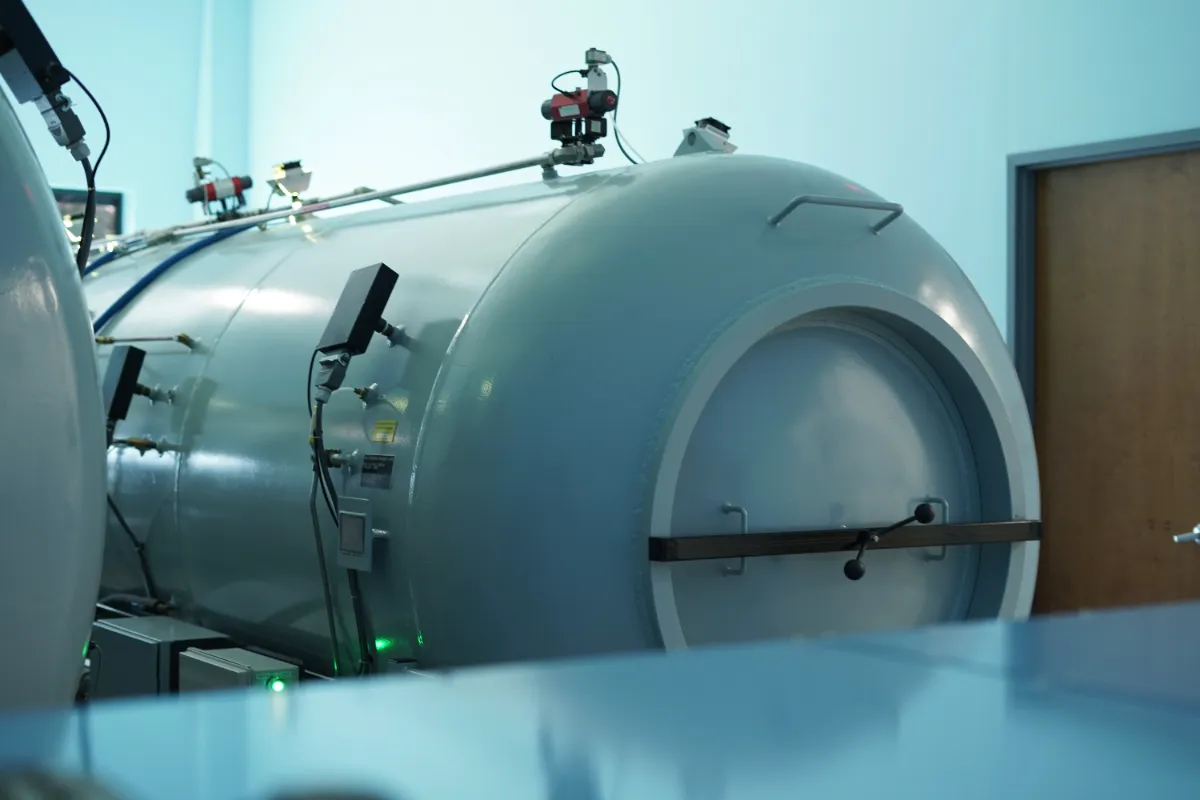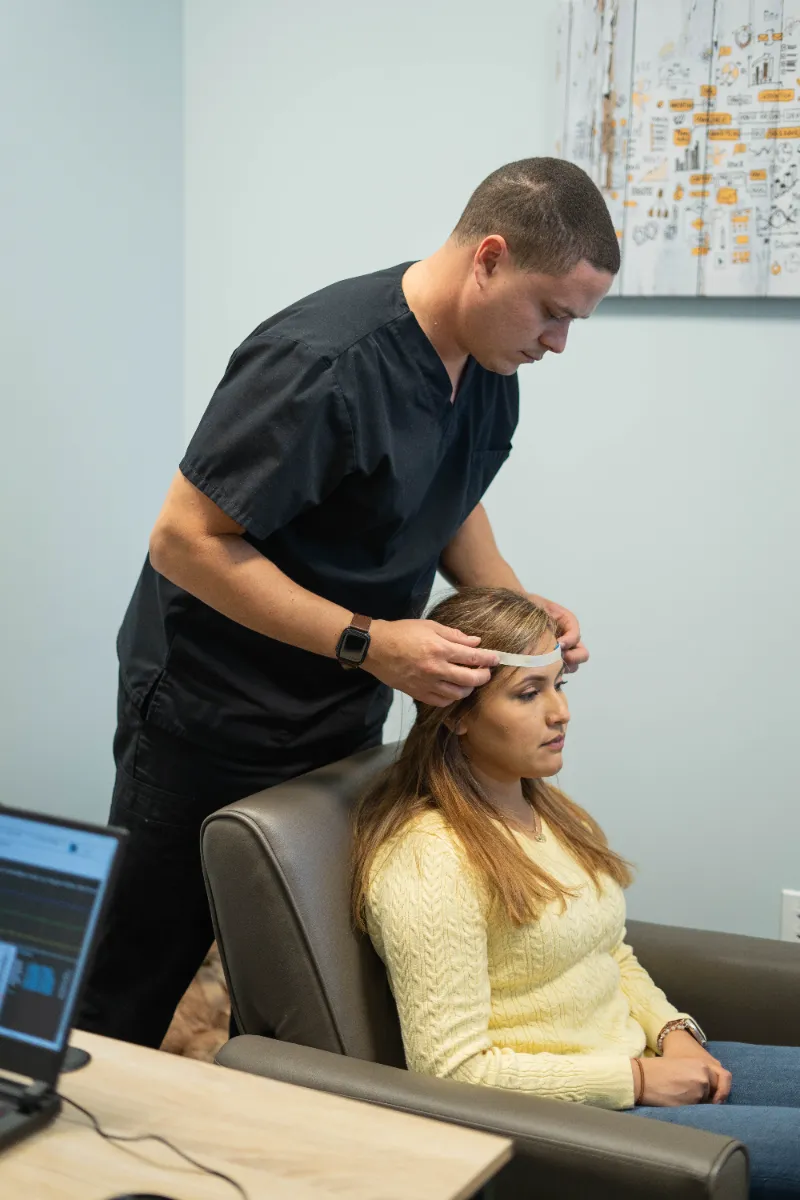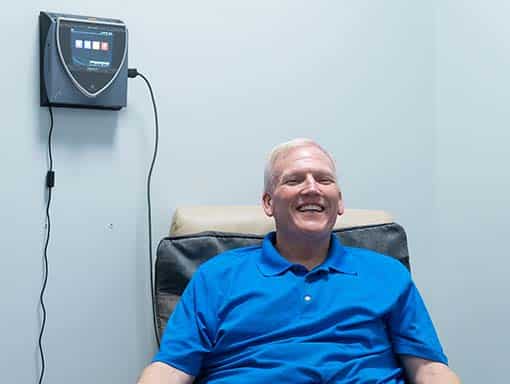Lyme Disease
Lyme disease is a serious illness caused by the Borrelia burgdorferi bacterium, which is spread through the bite of infected black-legged ticks. In its early stages, it may cause flu-like symptoms, joint pain, or a bull’s-eye-shaped rash. However, if not treated promptly—or even sometimes after antibiotic treatment—it can become a long-term condition known as chronic Lyme disease or Post-Treatment Lyme Disease Syndrome (PTLDS). This can lead to ongoing symptoms that significantly impact daily life.
People with chronic Lyme often experience extreme fatigue, brain fog, memory problems, anxiety, depression, chronic pain, and sleep disturbances. The illness is difficult to treat because it involves a complex mix of infection, inflammation, and immune system disruption. As the body begins to heal and eliminate toxins, many patients may experience what’s known as a Herxheimer reaction—a temporary worsening of symptoms caused by the rapid die-off of bacteria. This can make patients feel worse before they start to feel better, but it’s often a sign that the treatment is working.
Understanding Lymes Disease
Chronic Lyme is not just an ongoing infection—it is a condition that disrupts nearly every major system in the body. The persistent symptoms many patients face are driven by a combination of physiological and neurological imbalances, which include:
- Chronic Neuroinflammation: Borrelia can trigger an inflammatory cascade within the central nervous system, leading to symptoms such as cognitive decline, anxiety, depression, and autonomic nervous system dysregulation.
- Mitochondrial Dysfunction: The energy-producing mitochondria in cells are often damaged by oxidative stress and infection, resulting in profound fatigue and poor tissue repair.
- Immune System Dysregulation: The immune system may remain chronically activated or suppressed, unable to effectively clear infections or respond to new threats. This includes poor control over co-infections like Bartonella, Babesia, and Ehrlichia.
- Oxidative Stress & Detoxification Burden: Toxins from the pathogens themselves, as well as byproducts of the immune response, can overload the body’s detox pathways (especially liver and lymphatic systems), leading to cellular damage and inflammation.
- Blood-Brain Barrier Permeability: Disruption of this protective barrier allows immune cells, toxins, and pathogens to enter the brain, fueling further neuroinflammation and neurological symptoms.
- Nutritional Deficiencies & Gut Dysfunction: Chronic inflammation and long-term antibiotic use often result in poor nutrient absorption and gut dysbiosis, impairing healing capacity.
Treating Lyme disease effectively requires addressing these deep-rooted imbalances—not just suppressing symptoms. A comprehensive healing strategy must focus on restoring neurological function, reducing inflammation, supporting detoxification, rebalancing the immune system, and rebuilding cellular health.
Extivita Therapies for Lyme Disease

Hyperbaric Oxygen Therapy

Neurofeedback

Nutritional IV Therapy

Pulsed Electromagnetic Field Therapy (PEMF)

Infrared Sauna
Hyperbaric Oxygen Therapy (HBOT) for Lyme Disease
Hyperbaric Oxygen Therapy (HBOT) involves breathing 100% medical-grade oxygen in a pressurized chamber—typically at 2.0 atmospheres absolute (ATA). This increases the amount of oxygen dissolved directly into the blood plasma, allowing for deeper and more efficient oxygen delivery to tissues, including areas with poor circulation or infection.
In Lyme disease, where chronic inflammation, neurological dysfunction, and poor oxygenation are common, HBOT helps promote healing on a cellular level. It supports the immune response, reduces neuroinflammation, enhances mitochondrial repair, and may even inhibit Borrelia burgdorferi—the bacteria responsible for Lyme disease.
Benefits for Lyme Disease
Reduces Neuroinflammation and Brain Fog
Chronic Lyme often leads to inflammation in the brain and nervous system, resulting in symptoms like brain fog, anxiety, and memory issues. HBOT reduces neuroinflammation by increasing oxygen delivery to inflamed tissues and helping restore the blood-brain barrier. Many patients experience improved mental clarity, concentration, and mood after HBOT sessions.
Enhances Mitochondrial Function and Cellular Energy
Lyme disease disrupts mitochondrial function, leading to extreme fatigue and slow recovery. HBOT stimulates mitochondrial activity and supports the production of ATP (the body’s cellular energy source). With better cellular energy, patients often notice increased stamina, reduced fatigue, and improved physical performance.

Supports Immune Modulation
The immune system can become dysregulated during chronic Lyme—either overactive or suppressed. HBOT helps balance immune activity by reducing inflammatory cytokines and promoting white blood cell efficiency. This immune-modulating effect allows the body to better control infections and co-infections while minimizing autoimmune flares.
Promotes Detoxification and Tissue Repair
Lyme toxins and dead bacterial byproducts place a heavy burden on the liver and detoxification pathways. HBOT enhances oxygen availability to the liver and kidneys, improving their detox performance. It also boosts antioxidant activity, helping neutralize oxidative stress. This results in less inflammation, fewer headaches, and improved toxin clearance.
Improves Circulation and Oxygenation
HBOT stimulates angiogenesis—the formation of new blood vessels—restoring healthy circulation to areas damaged by inflammation or infection. Improved blood flow means improved oxygen and nutrient delivery to tissues that need repair. This accelerates recovery from joint pain, nerve damage, and musculoskeletal dysfunction caused by Lyme.
Neurofeedback for Lyme Disease
Neurofeedback is a non-invasive, drug-free brain training therapy that helps regulate abnormal brainwave activity using real-time visual or auditory feedback. For individuals with Lyme disease—especially those experiencing neurological symptoms like brain fog, anxiety, or sleep disturbances—neurofeedback retrains the brain to shift away from dysfunctional patterns caused by chronic inflammation and infection. By encouraging healthier neural activity and promoting neuroplasticity, this therapy supports clearer thinking, emotional balance, and improved overall brain function.
How Neurofeedback Therapy Supports Lyme Disease
Rewires Brainwave Patterns Affected by Neuroinflammation
Lyme disease can disrupt normal brainwave activity, leading to cognitive and emotional instability. Neurofeedback targets these imbalances by training the brain to self-correct and adopt healthier patterns. Over time, this promotes neuroplasticity—the brain’s ability to adapt and heal—which is essential for recovering from Lyme-related neurological dysfunction.
Reduces Sensory Sensitivities and Autonomic Dysregulation
Lyme disease can heighten sensitivity to sound, light, and touch, and cause dysregulation in the autonomic nervous system. Neurofeedback helps stabilize these systems by promoting balance between the sympathetic (fight-or-flight) and parasympathetic (rest-and-digest) responses. This can lead to reduced sensory overload and better tolerance to daily stressors.
Improves Mental Clarity and Focus
Many Lyme patients experience brain fog, forgetfulness, and difficulty concentrating. Neurofeedback enhances communication between key brain areas, such as the prefrontal cortex and hippocampus, improving mental clarity and cognitive processing. As brain function improves, patients often report sharper focus, quicker thinking, and better memory recall.

Enhances Sleep Quality
Sleep disturbances are a frequent complaint in Lyme disease and can hinder recovery. Neurofeedback targets irregular brainwave patterns—such as excessive high beta or suppressed delta—that interfere with restful sleep. Training the brain to enter deeper, more restorative states supports better sleep, which in turn improves energy, immunity, and mood.
IV Therapy for Lyme Disease
Nutritional IV Therapy delivers a concentrated blend of vitamins, minerals, antioxidants, and amino acids directly into the bloodstream—bypassing the digestive system for optimal absorption. For individuals with Lyme disease, this therapy is a critical tool for replenishing nutrient deficiencies, reducing inflammation, and supporting detoxification and cellular repair. These functions are essential in addressing the systemic imbalances caused by chronic infection and inflammation.

How IV Therapy Helps with Lyme Disease Recovery
Replenishes Nutrient Deficiencies
Chronic Lyme disease and prolonged immune activation can drain the body of vital nutrients. IV Therapy restores essential compounds like B-complex vitamins, magnesium, and vitamin C, which are often depleted due to inflammation, poor gut absorption, or long-term antibiotic use. This helps restore energy, immune resilience, and neurological balance.

Promotes Detoxification
Lyme-related toxins and co-infection byproducts can burden the liver and impair cellular function. IVs containing antioxidants such as Glutathione enhance liver detox pathways and neutralize oxidative stress, aiding in the elimination of harmful substances that contribute to brain fog, fatigue, and systemic inflammation.
Supports Brain Health
Key nutrients like NAD+, and B vitamins help repair neuronal damage and improve communication between brain cells. These ingredients also support neurotransmitter production, enhancing mood stability, cognitive clarity, and the body’s ability to cope with stress—common challenges for Lyme patients.
Recommended IV Protocols for Lyme Disease Recovery
Myers’ Cocktail IV
Components: B-complex vitamins, Vitamin C, Magnesium, and Calcium
- This broad-spectrum IV replenishes commonly depleted nutrients in Lyme patients. B vitamins support energy metabolism and nervous system repair, magnesium reduces muscle pain and nerve irritability, and Vitamin C acts as a powerful antioxidant and immune booster. It’s ideal for general support and recovery.
Glutathione IV
Components: Reduced Glutathione
- Lyme toxins and chronic inflammation increase oxidative stress and burden detox pathways. Glutathione enhances liver function, supports mitochondrial repair, and protects brain cells from oxidative damage. It’s especially useful in patients with neurological Lyme symptoms or detox challenges.
NAD+ Trio IV
Components: Myers’ Cocktail, Reduced Glutathione, NAD+
- Chronic infection often depletes NAD+, a coenzyme critical for mitochondrial energy production, DNA repair, and
neurological function. NAD+ IV therapy can help restore energy, improve cognitive clarity, reduce brain fog, and
enhance overall cellular resilience.
High-Dose Vitamin C IV
Components: Ascorbic Acid (Vitamin C) 15g-75g
- Vitamin C supports immune modulation and acts as an antiviral, antibacterial, and anti-inflammatory agent. High-dose Vitamin C has been used in Lyme protocols to support immune defenses and enhance tissue repair.
Pulsed Electromagnetic Field (PEMF) for Lyme Disease
PEMF Therapy uses low-frequency electromagnetic waves to gently stimulate the body’s cells. This non-invasive treatment enhances circulation, supports energy delivery at the cellular level, and promotes cellular repair—all important for managing vertigo symptoms.
How PEMF Therapy Supports Lyme Disease Recovery
Enhances Microcirculation and Oxygen Delivery
CO poisoning impairs tissue oxygenation by displacing oxygen from hemoglobin and reducing blood flow to critical tissues. PEMF has been shown to:
- Increase capillary blood flow
- Promote angiogenesis (new blood vessel formation)
- Improve tissue oxygenation and nutrient delivery
This can be particularly beneficial for brain and cardiac tissues that suffered hypoxic damage during CO poisoning.
Supports Mitochondrial Function and Energy Production
Mitochondrial dysfunction is a sign of chronic Lyme, contributing to fatigue, brain fog, and slow recovery. PEMF stimulates mitochondria to produce more ATP—the energy currency of the cell. This boost in cellular energy supports physical endurance, tissue repair, and neurological resilience.
Promotes Nervous System Regulation
Lyme can dysregulate the autonomic nervous system, leading to anxiety, sleep issues, and overstimulation. PEMF Therapy helps rebalance the nervous system by normalizing electrical activity in the brain and body. Patients often experience greater calm, better stress tolerance, and more restorative sleep.
Improves Oxygenation and Circulation
PEMF enhances microcirculation, allowing more oxygen and nutrients to reach damaged or inflamed tissues. This supports detoxification, immune efficiency, and tissue regeneration—critical components in long-term Lyme disease recovery.
Infrared Sauna for Lyme Disease
Infrared Sauna Therapy uses infrared light to gently heat the body directly, rather than warming the air around you. This allows for a more comfortable experience at lower temperatures compared to traditional saunas, typically between 120°F and 140°F (49°C–60°C)²². The deep-penetrating heat promotes relaxation and overall wellness.
How Infrared Sauna Supports Lyme Disease

Promotes Detoxification
Lyme disease and its co-infections release toxins that burden the liver, kidneys, and lymphatic system. Infrared Sauna Therapy stimulates deep, cellular-level sweating to help eliminate heavy metals, chemicals, and microbial byproducts. This reduces the body’s toxic load and may ease Herxheimer reactions—temporary symptom flare-ups caused by rapid toxin die-off—supporting a gentler, more manageable recovery process.
Supports Mitochondrial Function and Energy Production
Chronic inflammation is one of the most debilitating aspects of Lyme disease, often resulting in joint pain, muscle stiffness, and nerve discomfort. The deep-penetrating heat from infrared saunas boosts circulation and relaxes tense tissues, helping to calm inflammatory responses. Patients frequently report significant relief from body aches and improved mobility following regular sessions.
Eases Anxiety and Calms the Nervous System
Neurological Lyme symptoms like anxiety, irritability, and mood swings are often tied to inflammation and nervous system imbalance. Infrared sauna therapy lowers cortisol (the body’s primary stress hormone) while increasing endorphin release, creating a calming effect on both body and mind. This makes it a valuable therapy for emotional regulation and stress resilience during Lyme recovery.
Schedule a free wellness consultation to explore a personalized plan that supports your cognitive health and overall brain function.
Schedule Your Free Wellness Visit →
References:
- Huang, Chien-Yu, et al. “Hyperbaric oxygen therapy as an effective adjunctive treatment for chronic lyme disease.” Journal of the Chinese Medical Association, vol. 77, no. 5, May 2014, pp. 269–271, https://doi.org/10.1016/j.jcma.2014.02.001.
- Kahle, Adam C, and Jeffrey S Cooper. “Hyperbaric Physiological And Pharmacological Effects of Gases.” StatPearls Publishing, 10 July 2023.
- Hadanny, A., H. Golan, et al. “Hyperbaric oxygen can induce neuroplasticity and improve cognitive functions of patients suffering from anoxic brain damage.” Restorative Neurology and Neuroscience, vol. 33, no. 4, 19 Aug. 2015, pp. 471–486, https://doi.org/10.3233/rnn-150517.
- Gottfried, Irit, et al. “Hyperbaric oxygen treatment—from mechanisms to cognitive improvement.” Biomolecules, vol. 11, no. 10, 15 Oct. 2021, p. 1520, https://doi.org/10.3390/biom11101520.
- Blaskovits, Farriss, et al. “Effectiveness of neurofeedback therapy for anxiety and stress in adults living with a chronic illness: A systematic review protocol.” JBI Database of Systematic Reviews and Implementation Reports, vol. 15, no. 7, July 2017, pp. 1765–1769, https://doi.org/10.11124/jbisrir-2016-003118.
- Luctkar-Flude, Marian, and Dianne Groll. “A systematic review of the safety and effect of neurofeedback on fatigue and cognition.” Integrative Cancer Therapies, vol. 14, no. 4, 25 Feb. 2015, pp. 318–340, https://doi.org/10.1177/1534735415572886.
- Jensen, Mark P., et al. “Neurofeedback treatment for pain associated with complex regional pain syndrome type I.” Journal of Neurotherapy, vol. 11, no. 1, 20 June 2007, pp. 45–53, https://doi.org/10.1300/j184v11n01_04.
- Tichauer, Cory, et al. “High dose intravenous vitamin C for lyme disease: A safety and tolerability study with an exploratory assessment of treatment efficacy.” Medical Research Archives, vol. 12, no. 1, 30 Jan. 2024, https://doi.org/10.18103/mra.v12i1.4941.
- Kerstholt, Mariska, et al. “Role of glutathione metabolism in host defense against borrelia burgdorferi infection.” Proceedings of the National Academy of Sciences, vol. 115, no. 10, 14 Feb. 2018, https://doi.org/10.1073/pnas.1720833115.
- “PEMF Therapy to Treat Lingering Symptoms of Lyme Disease After Treatment With Antibiotics.” Cdn.Clinicaltrials.Gov, 2 Sept. 2021, cdn.clinicaltrials.gov/large-docs/53/NCT04577053/Prot_000.pdf.
- Tsagkaris, Christos, et al. “Infrared radiation in the management of musculoskeletal conditions and chronic pain: A systematic review.” European Journal of Investigation in Health, Psychology and Education, vol. 12, no. 3, 14 Mar. 2022, pp. 334–343, https://doi.org/10.3390/ejihpe12030024.
- Chang, Ming, et al. “A study on neural changes induced by sauna bathing: Neural basis of the ‘Totonou’ State.” PLOS ONE, vol. 18, no. 11, 27 Nov. 2023, https://doi.org/10.1371/journal.pone.0294137.





